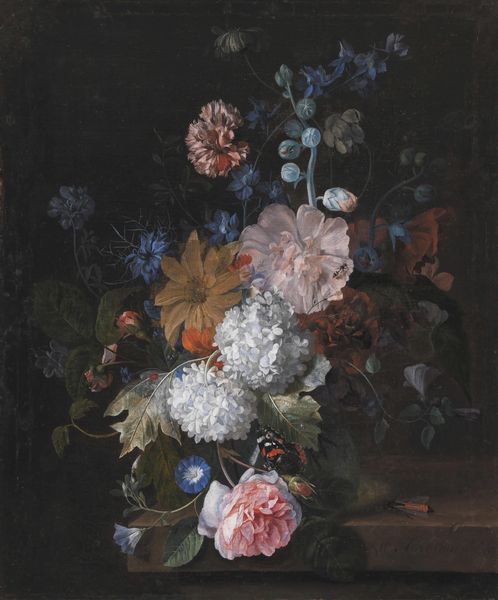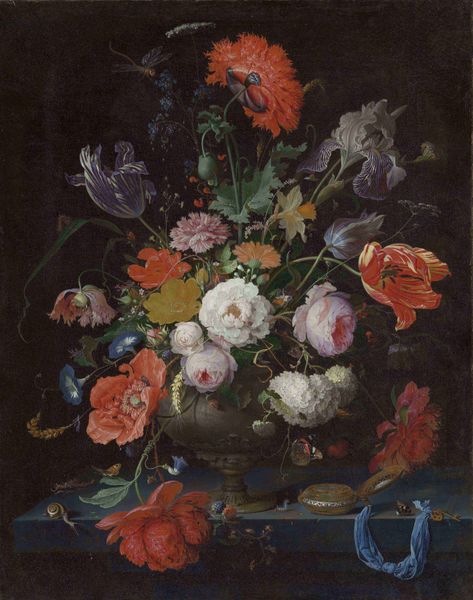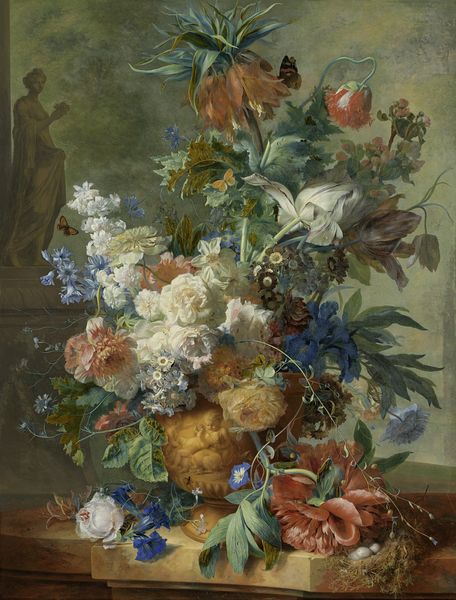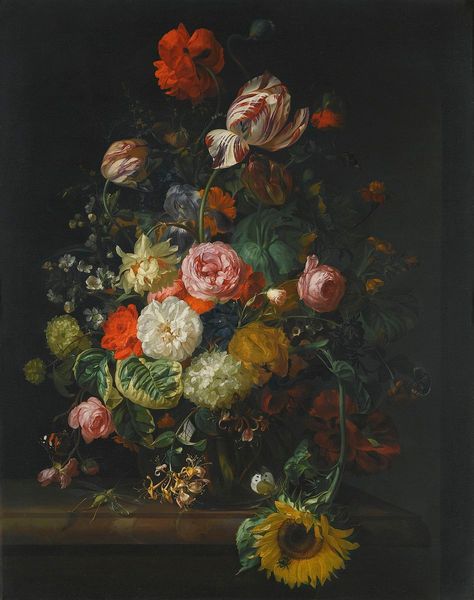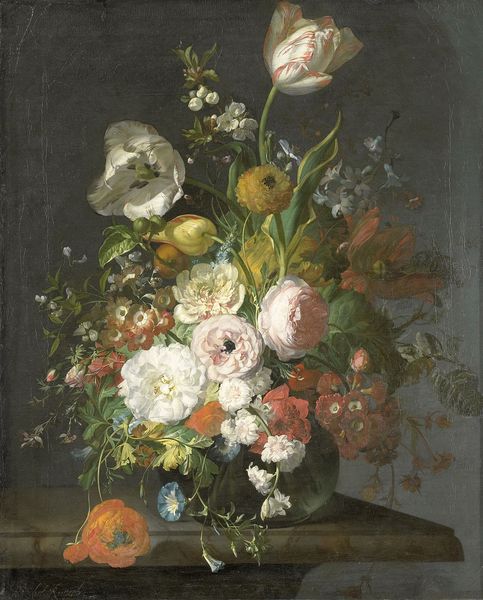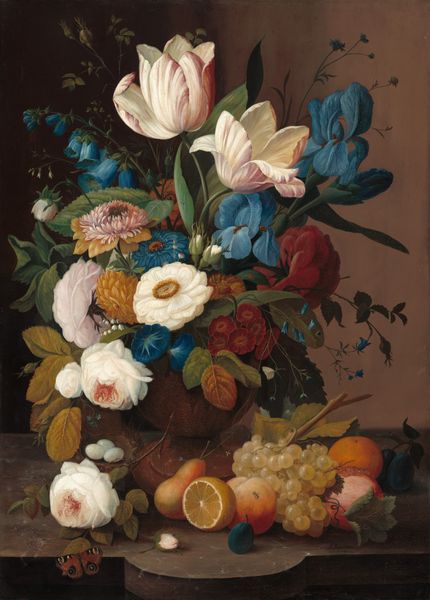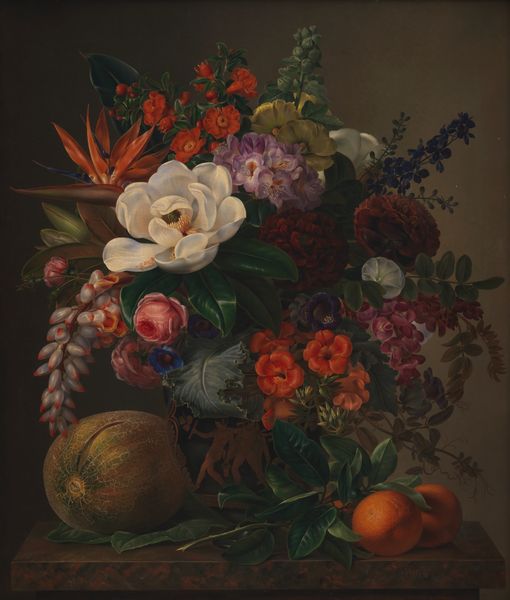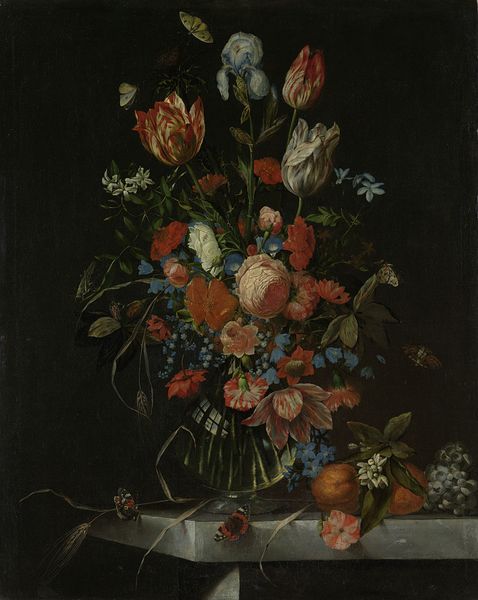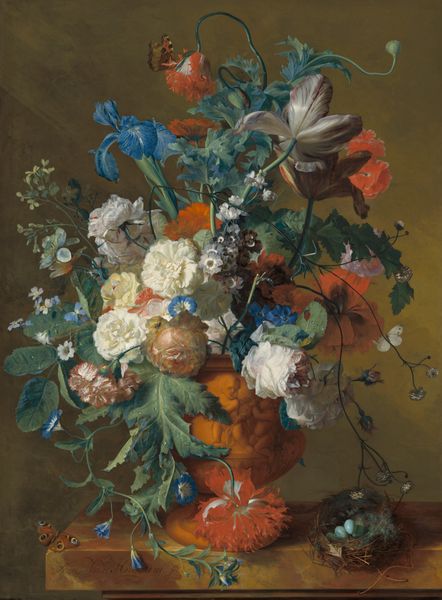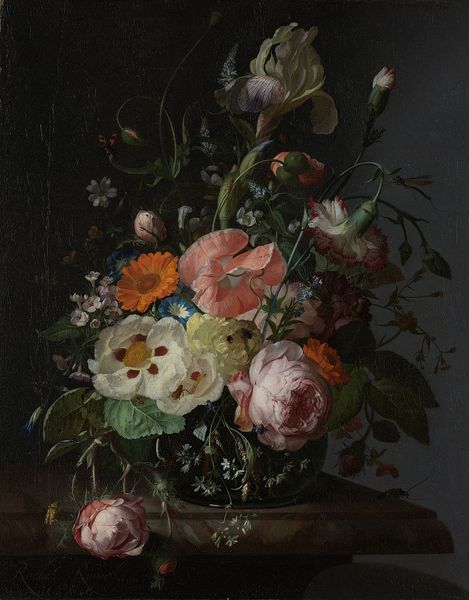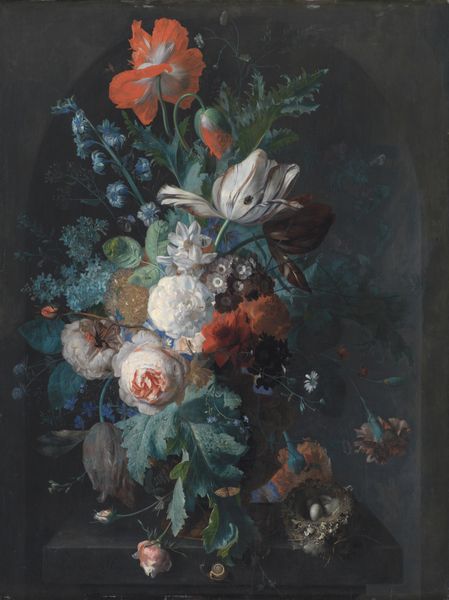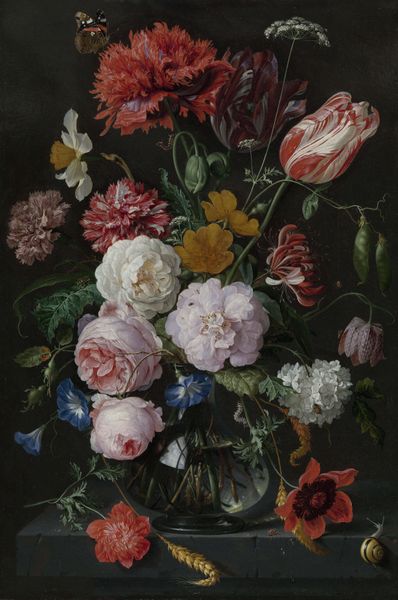
oil-paint
#
baroque
#
dutch-golden-age
#
oil-paint
#
oil painting
#
vanitas
Dimensions: support height 59 cm, support width 43 cm, frame height 75.8 cm, frame width 59.8 cm
Copyright: Rijks Museum: Open Domain
Curator: What a vibrant still life! The canvas before us presents Balthasar van der Ast's "Still Life with Flowers," painted around 1625-1630. Editor: It strikes me as intensely organized. The flowers reach for the top corners in a manner that is only broken by the curious arrangement on the ledge where it all sits. It’s…almost artificial. Curator: "Artificial," perhaps because these meticulously arranged blooms would never naturally appear together? The flowers suggest wealth and global trade networks, indicating the influence of the Dutch Golden Age's economic expansion and colonial exploits. Shells were another desired product during the Dutch Golden Age. Editor: It makes sense. But consider, more narrowly, how those blossoms are illuminated. See the light fall, the deliberate construction of shadow. The darker ground isolates it. The composition itself becomes the primary narrative, overriding the mere presence of floral arrangement as subject matter. Curator: True. But van der Ast wasn't only showing his technique or keen observation of botanicals. He actively displays commodity culture itself; the price commanded for exotic flowers during tulip mania is intrinsic. And what about labor—the cultivation, transportation, and artistic labor that produced this image? It speaks to the economy, production and society surrounding its creation. Editor: Even more fascinating. And yet the lizard draws our eyes—a sharp interruption, a break in color temperature from those warmer blooms. It functions not only as a material, of course, but also symbolically and as a formal interruption of our visual field. Curator: It certainly represents transformation and earthly matters which adds another level of vanitas symbolism in addition to the fleeting blooms. Considering the painting's function and its context is the start of the investigation! Editor: Precisely! I wonder if we will ever get past all its symbols.
Comments
rijksmuseum about 2 years ago
⋮
A magnificent bouquet of tulips, roses, iris, columbine and gillyflowers is set in a ribbed glass vase. The artist first made a detailed drawing on the prepared panel before beginning to paint. In the intervening centuries, some of the pigments, primarily the lighter colours, have become transparent, allowing the underdrawing to show through.
Join the conversation
Join millions of artists and users on Artera today and experience the ultimate creative platform.


